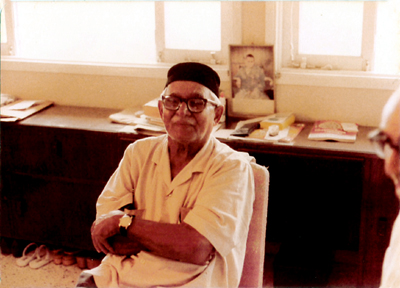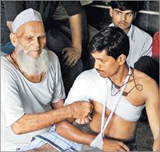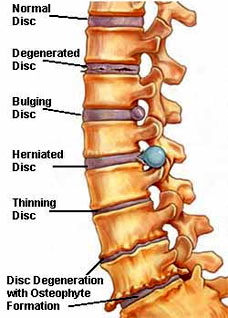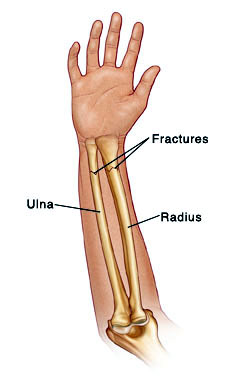The healer
Hadvaid — Manchershaw Madhivala
Abstract
This article is a first-hand experience from one great Parsi lady who sponsored the work of Manchershaw Madhivala, the famous hadvaid, or bone-setter of India. Dr. Madhivala lived in the 1950’s in Gujrat and people from all walks of life from all over India and abroad were healed by him.
In this article, the authoress describes three exceptional cases of bone-setting amidst a sea of patients who were treated by Manchershaw Madhivala from her home over the years. She not only opened her door to these suffering people but also her generous heart to the generous Manchershaw Madhivala when he did not have money to buy seeds to sow his lands. These cases are a clinical eye-opener to every healer and doctor to know that some people are born to heal whether they have a degree or not!
It was way back in 1960-61 when my husband and I returned from Delhi that we were told about an accident my husband’s father Ardeshir had faced. He had a fall and had broken the head of his femur bone. He was 82. An operation was scheduled with the foremost orthopaedic surgeon of the time. During the operation the broken head of his femur was replaced by a stainless steel ball held in place in the femur by a metal attachment, to fit into the hip bone. An x-ray taken immediately after the operation showed everything to be perfectly in place. Papa was made to walk the very second day and was sent home on the 10th day. A short while later Papa started getting an unbearable pain in his hip. Nani Palkhivala, his elder son, immediately called home the same surgeon who examined Papa thoroughly and prescribed physiotherapy. This involved wearing skates on his foot and moving the foot from side to side. Papa’s pain became excruciating.
Having had very little relief from the best possible orthopaedic surgeon, we began to look for alternatives. We thought of Madhivala, an expert bone-setter, who, we were told, did not go to the patient’s home. The patient had to be brought to him, and we could not move Papa. So the three of us: my sister-in-law Nargesh, my husband Behram and I went to the ‘OK Wafers‘ shop. In that space was a serpentine queue of patients. On hearing about Papa, Manchershaw agreed to come home with us. We waited till he had finished with his patients of the day and then he came with us though it was long past lunchtime!
Looking at Papa, Manchershaw first asked for the x-ray. No x-rays were taken except the one in the hospital. Manchershaw touched the big toe of Papa’s fractured leg, and just by seeing his leg and the reaction on Papa’s face, said that the steel ball that had been inserted in the place of the head of the femur bone had slipped out of the pelvic socket and the pin that was inserted into the main bone had also slipped and was cutting through the bone causing the pain. He asked us to get an x-ray taken immediately. He also prescribed complete immobilisation and completely stopped the excruciating exercise routine.
The x-ray machine was brought home and the x-ray picture showed exactly what Manchershaw had said just by touching Papa’s big toe and seeing his facial reaction! Manchershaw prescribed oils and herbs which we could buy from the ’OK Wafers’ shop. He also recommended fresh herbs which we started growing later at home so that Papa could have a constant fresh supply. Papa was relieved of the constant unbearable pain.
However, having suffered so much pain at his age and then being completely in bed, unfortunately caused him lung congestion and other complications. Some months later, he passed away.
Our prolonged interaction with Manchershaw created a close bond that persisted even after Papa’s passing. He began to see patients in our flat at Sterling Apartments at Pedder Road, calling it ‘Dhan Clinic’. The large hall used to be filled with patients, and there were more patients crowding the passage and the landing!
Surprising results were seen. Patients suffering from slipped discs used to come on stretchers in ambulances. They were generally placed on my bed and Manchershaw would ask me to let the stretchers and the ambulances go. I would beg of him, in the beginning, to let them stay till he worked on the patient and found him or her able to walk. But he would insist. Still, wanting to play safe, I would ask the stretcher bearers to wait outside!
Manchershaw would have the patient lie down on his or her back. Two persons would sit on both sides of the patient, facing the patient’s head. Each person would place his feet on each side of the patient’s head, with a towel between their feet and his head. Then they would hold hands and firmly press their feet on both sides of the patient’s head, thereby immobilising it. The patient would then be made to turn his legs and pelvis to one side with his head held in the facing-up position. Manchershaw would thereafter stand by the side of the patient, place his foot upon a particular spot on the patient’s buttocks or waist, and give a push forward, with a slight jerk. All his knowledge and vast experience of decades accompanied each such ‘kick’. One could hear the cracking sound often accompanied by a scream from the patient as the bones got readjusted into correct position. The patient would be completely relieved of his or her pain, and would walk out of the door without the requirement of the stretcher boys (who were still waiting outside).
For cervical and dorsal spondylitis as also for knee, back and shoulder pain, Manchershaw had his own method of curing his patients. He worked on them all, and the patients left with smiling faces. For all these marvellous cures, Manchershaw would not charge a single rupee. Only the medicines had to be purchased from the ’OK Wafers’ shop. In addition to the ’OK Wafers’ shop at Tardeo and B.Meherwan’s shop opposite Grant Road Station for years, Manchershaw conducted his ‘clinic‘ at our house at Sterling Apartments and worked wonders with so many kinds of problems.
My back, which had always been prone to nagging pain was often relieved by just one ‘kick’ from Manchershaw.
When Manchershaw stopped coming to Mumbai, his disciple, Jal Amaria used to carry on his good work at his own home and other places.
Once Manchershaw introduced me to a Parsi gentleman who was a resident of Karachi. This man had once broken his femur bone in 12 places! It was an exceptionally long femur as he was an exceptionally tall gentleman. The man had got a plane chartered for Manchershaw and his workers to go to Karachi immediately. He refused to get himself operated upon, or treated by anyone else. On reaching Karachi, Manchershaw adjusted his broken femur, tied it up firmly with the packing of herbal extracts and wooden splints, and gave the gentleman the required herbal medication. When I met the gentleman many years later, he was walking perfectly. It was impossible to imagine that his femur had ever been broken in 12 parts!
Another very remarkable incident of long past comes to mind: an advocate, Barzo Irach Taraporewala’s eight-year-old daughter Soonoo fell while playing, and the x-ray showed that both her right forearm bones, ulna and radius had broken. She was in great pain, so we took her to a hadvaid in Mumbai to relieve her of her pain. The hadvaid said that both her bones could not be aligned. One or the other would be out of alignment all her life, and her forearm would always be crooked. As for playing the piano, which she was very good at, he said she might never be able to play skillfully again. However, he did some alignment work, tied up her forearm, and asked her to be patient with the pain till the healing took place.
Barzo and his wife Shera were now keen to go to Madhivala only. I gave them the detailed address and the very next day they went to Madhi. Manchershaw saw Soonoo, opened up her bandage, and there started a ‘tug of war’ as Soonoo now puts it! Barzo was asked to pull the forearm from one end and Manchershaw pulled it from the other, till the bones were once more separated!! Then Manchershaw, in his own way, aligned and set them, put splints around them and said they were perfectly aligned and set, but the splints would have to remain intact for a month. When Manchershaw related the story to me, he said, “That little girl, Soonoo, is pure gold! She did not utter a word or cry throughout the whole very, very painful process!” It did take one month for the pain to go, but it went completely, and her forearm is absolutely normal, and she could play the piano too, which she still does.
Soonoo, as a grown lady and a librarian at the British Council Library, again slipped and fell, and fractured her arm, this time being the left upper arm. Manchershaw was around no more then, and she had to undergo surgery even though it was just one bone, the humerus that had been fractured.
Fortunately the teachings and the good work of this exceptional being have been passed on. Today, having trained with Jal Amaria for 14 years, Kayomarz Patel continues the legacy.* Kayomarz is an MBA, and a practising professional in regulatory affairs. Despite his busy schedule, Kayomarz takes some time on two days in a month to treat a sea of patients who come to him with all manner of bone and spine ailments. As it was in Manchershaw’s time, the treatment and advice are always given free.
Kayomarz currently sees patients on the second and fourth Sundays of the month at Sacred Heart Church Community Service Building, Andheri (East) Mumbai. The authorities concerned need the patients to be registered only between 4 and 5 pm. Once the names are so registered, then Kayomarz works on them till late in the evening, going on into the night.
* See Patel Kayomarz Dr. ‘The traditional Parsi-Zoroastrian hadvaid — a historical perspective’. NAMAH 2013; (21:2): 34-42.
Mrs Dhan Palkhivala is a practising Iyengar Yoga teacher and lawyer who lives in Mumbai, India.
Share with us (Comments, contributions, opinions)
When reproducing this feature, please credit NAMAH, and give the byline. Please send us cuttings.





.jpg)